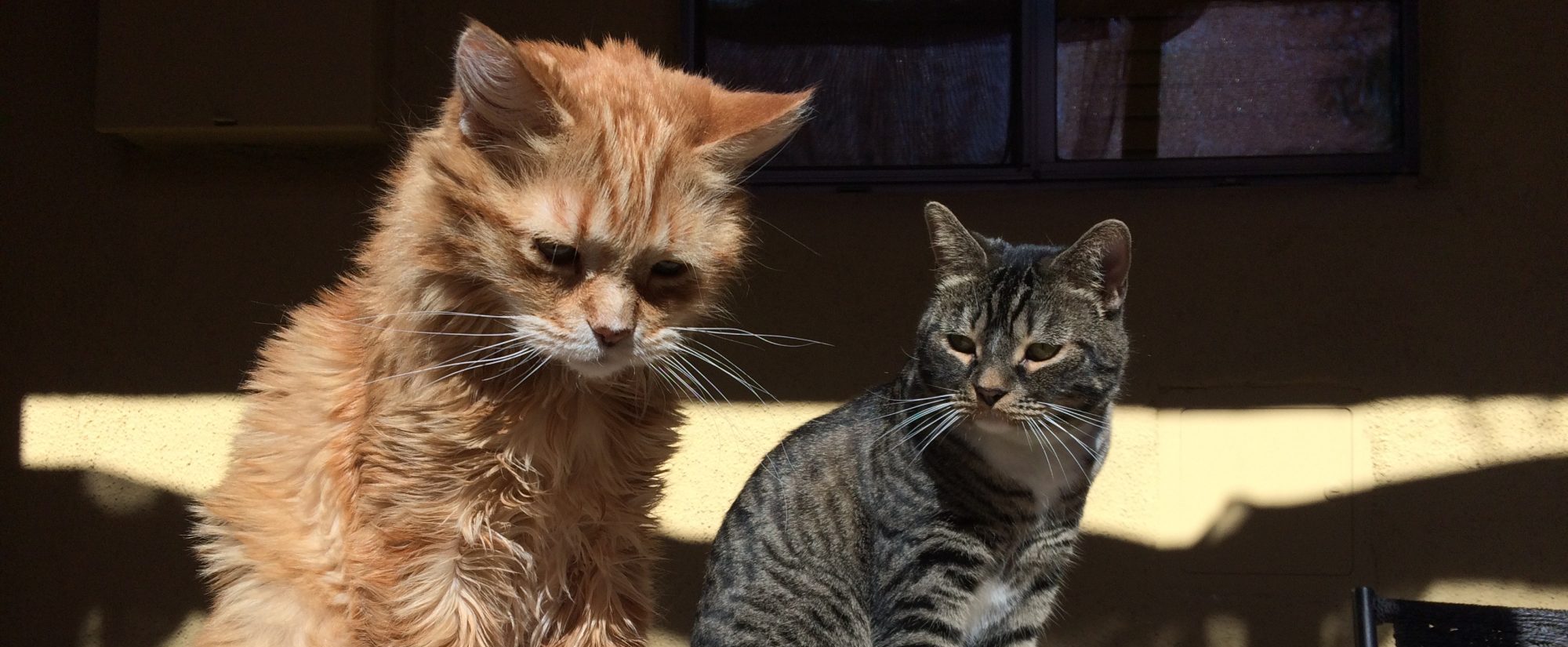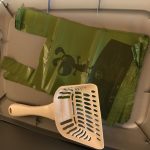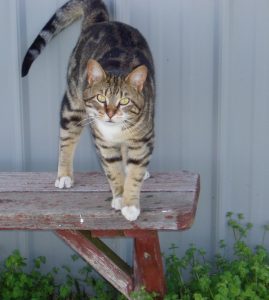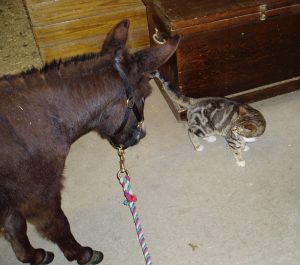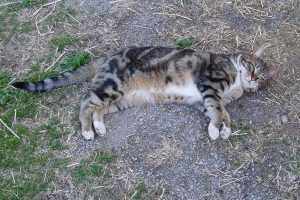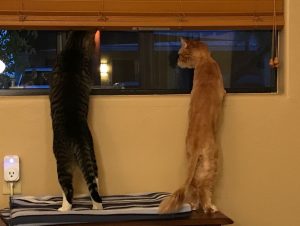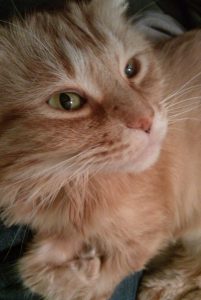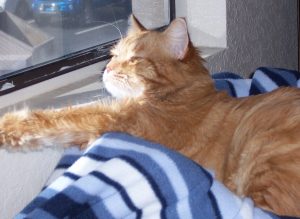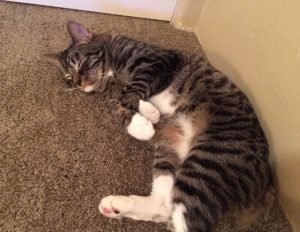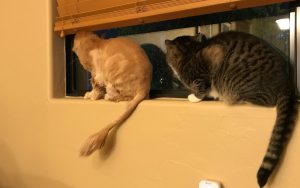What would happen if you needed to evacuate your home? How much time would it take to round up everything you need for you and your pets for a few days? Given all the hurricanes and wildfires recently, I hope more people have been asking themselves these questions. I’m a believer in being prepared for emergencies, and that means thinking things through, having a plan, and taking a few steps to make that plan easy to execute. This is not a post about being a “prepper” for apocalyptic scenarios, just about spending a little time thinking through how you would deal with needing to quickly move yourself and your pets to a safer location. Because how could you live with these two cuties and not have an emergency plan for them?
The possible emergencies you might face depend on where you live. Given where I live in Tucson, wildfires or hurricanes are not really an issue, but there’s always the risk of things like house fires or extended power outages. I encourage you to check out websites like Ready.gov for information about possible emergency situations and how you can prepare for them.
My approach to being prepared is to keep a bag for me and a box for the kitties ready to go in case we need to leave home in a hurry to head to either a friend’s house or a hotel. The bag for me has things like a week’s worth of my medications, some travel toiletries, a spare set of glasses, etc. Basically things that would be a pain to have to run around to pharmacies and stores to replace on short notice. Bonus: sometimes when I’ve put off packing for a trip and don’t feel like rounding these things up last minute, I just raid my emergency bag because it’s already set! (But I always replace it when I get home!)
So what is in Gus and Tycho’s emergency box? Well to start with, the box itself is important, because (once unpacked) it can serve as a litter box. In the bottom of the box is a container of lightweight litter (believe me, it’s worth springing for the lightweight stuff in this instance), along with a clean scooper and some bags for used litter.
Aside/pro tip: Gus and Tycho’s regular litter boxes are also plastic storage bins. They’re deep, so that helps keep litter (and other things) contained. And at about $5 each, they’re a lot cheaper than actual litter boxes.
Next in the cat emergency box is food. I keep a large, double bagged ziplock of dry food and a variety of the cats’ favorite canned foods in the box. There’s also a set of metal food and water dishes, and a few bottles of water (though not enough for extended needs).
The top layer of the box is a fleece blanket, some towels, an absorbent puppy pee pad (Tycho always needs one when he goes in his carrier), and a large tote bag to contain everything after the box is in use as a litter box. Once packed, the box lives in the hall closet, ready to go if needed!
I feel better knowing that if I can round the cats up into their carriers and grab this box, I will have everything I really need to take care of them. Other things you might want to put in your kit, depending on your pets’ needs are medications, leashes, vaccination records, and a list of hotels that accept pets (check out the Humane Society’s page on this for other ideas!). It’s also a good idea to have a pet first aid kit. I keep mine with G&T’s grooming supplies in case we ever have an incident while nail trimming or while I’m shaving Tycho.
You will also want to set up some reminder for yourself to swap out the food in your kit on a regular basis. Today’s post was brought to you by a google calendar alert telling me it was time to repack my emergency kits! I set up alerts to remind me to swap out the dry food every 3 or 4 months (I put the old food in the daily feeding rotation and put fresh food in the kit so none of it goes stale or goes to waste!). I also check the expiration dates on the canned food and swap out as necessary.
If you have suggestions for pet emergency plans, or have a story about having to evacuate with your pets, let me know in the comments!
